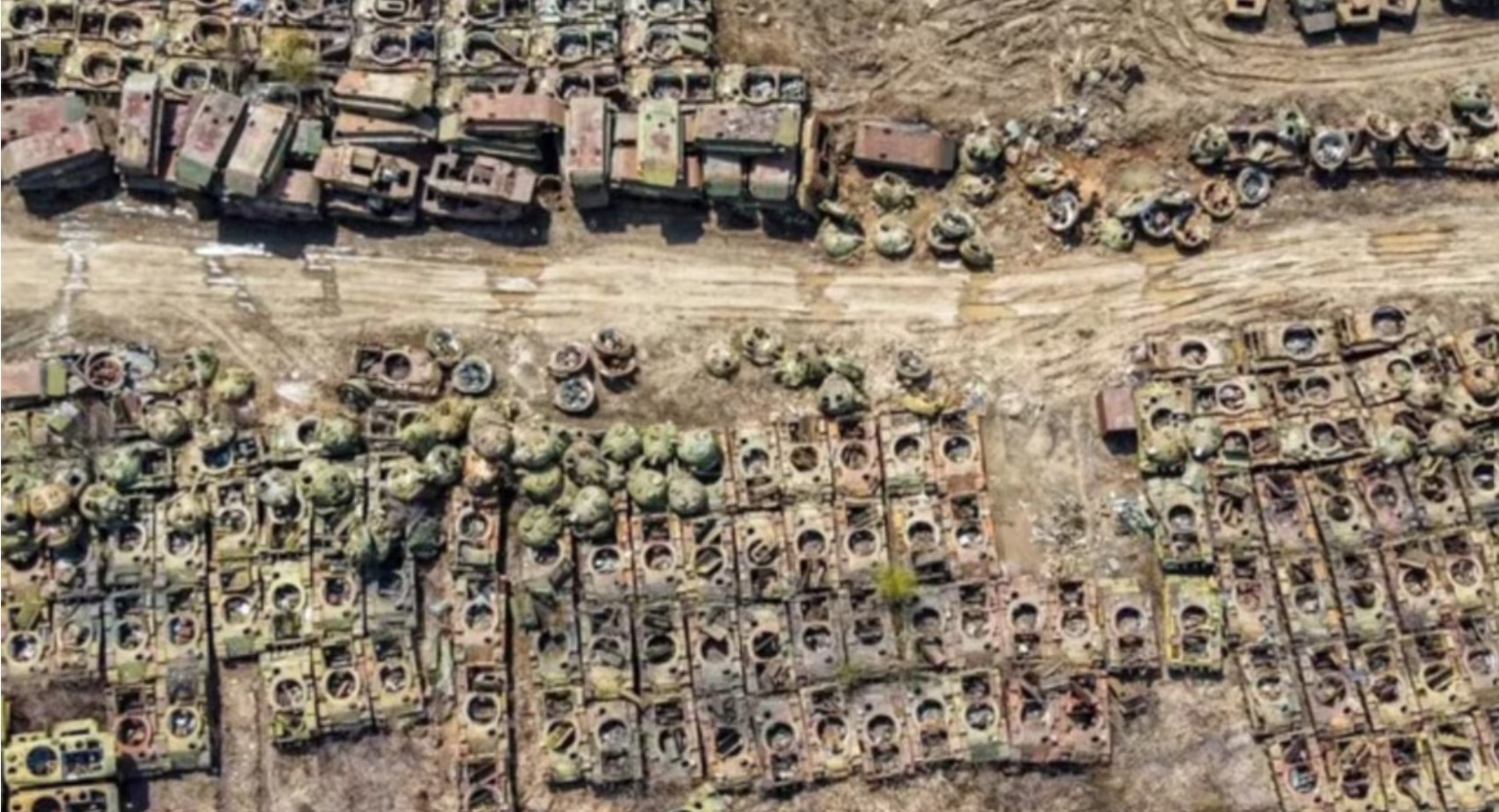After 42 months of grueling fighting in Ukraine, Russia’s stocks of modern armored vehicles are low. So low, in fact, that Russian technicians are pulling out of long-term storage derelict tanks that, until now, were widely considered unfit for combat.
Closely inspecting recent satellite imagery of Uralvagonzavod, the sprawling Russian tank plant in Nizhny Tagil 1,600 km from Ukraine, open-source analyst Jompy spotted something he’d long anticipated as Russian tank losses exceeded 4,000 earlier this year. That’s as many tanks as Russia had in front-line service before widening its war on Ukraine in February 2022.
“Just like that, there are a lot of likely T-72As parked in the yards outside UVZ now,” Jompy wrote, using the abbreviation for Uralvagonzavod. When tanks appear outside Uralvagonzavod, it’s usually because they’re gradually being brought inside the factory for refurbishment and possibly upgrade before being shipped off to front-line regiments, including those fighting in Ukraine.
The 46-ton, three-person T-72A isn’t the oldest T-72 variant, but it’s close. Just one model of T-72, the Ural, preceded the T-72 into Soviet service in the early 1970s. Russian industry produced thousands of T-72 Urals and T-72As, but the much-improved T-72B—with a stabilized 125-millimeter gun, thicker armor and a more powerful engine—succeeded it in the 1980s.
The older T-72s went into storage at bases such as the 349th Tank Storage Base, in Russia’s Topchikhinsky District 2,000 km from Ukraine. And there they remained for decades, useful only as sources of spare parts—until Ukrainian mines, artillery, missiles and drones wiped out entire generation of more modern tanks.
Too few new tanks
With Uralvagonzavod building just 300 or so of the latest T-90M tanks annually, the Kremlin has had little choice but to dip into stocks of very old T-72s in order to partially replace its tank losses in Ukraine. The 40-year-old T-72Bs began arriving at Uralvagonzavod by the dozens earlier this year, but there were just a few hundred T-72Bs in storage. There are around 1,000 T-72 Urals and T-72As.
As recently as last summer, High Marsed—another open-source analyst—concluded the first-generation T-72s weren’t of much use as long as Russia still had some of the slightly newer (but still very old) T-80Bs, T-80BVs and T-72Bs in storage. “I expect that at some point they will have to create an upgrade program for these tanks,” High Marsed wrote about the T-72As. That “should be a sign that there aren’t many T-72B, T-80B/BV left in storage.”
The sign has appeared. The T-72Bs and other 1980s-vintage tanks are running out. Now it’s the T-72As’ turn to fight in Ukraine on those increasingly rare occasions when the Russians risk tanks along the drone-patrolled front line.
How many of the 1,000 or so rusty early-model T-72s are still repairable after decades in open storage is unclear. It’s equally unclear how much Russia will invest in their refurbishment and upgrade. The T-72As lack many of the features that makes a modern tank modern—in particular, stabilized main guns that are accurate even when a tank is moving.
Ukraine’s oldest front-line tanks, its Leopard 1A5s, were last upgraded in the 1980s—but even they have stabilized guns.
The T-72As’ impending return to front-line service is the latest evidence of the steady “de-mechanization” of the Russian army as it suffers catastrophic losses in heavy equipment in Ukraine. The T-72As’ resurrection doesn’t mean the Russians are losing, however. What the Russian army lacks in modern tanks, it more than makes up for with manpower.
These days, Russian regiments in Ukraine mostly attack on motorcycles or on foot. They suffer heavy losses usually totaling more than 20,000 killed and wounded a month. But with generous signing bonuses and deceptive contracts, the Kremlin manages to recruit 30,000 fresh troops a month.
They fight without modern tanks, but they still fight. And they can still push back Ukraine’s own manpower-starved brigades.






